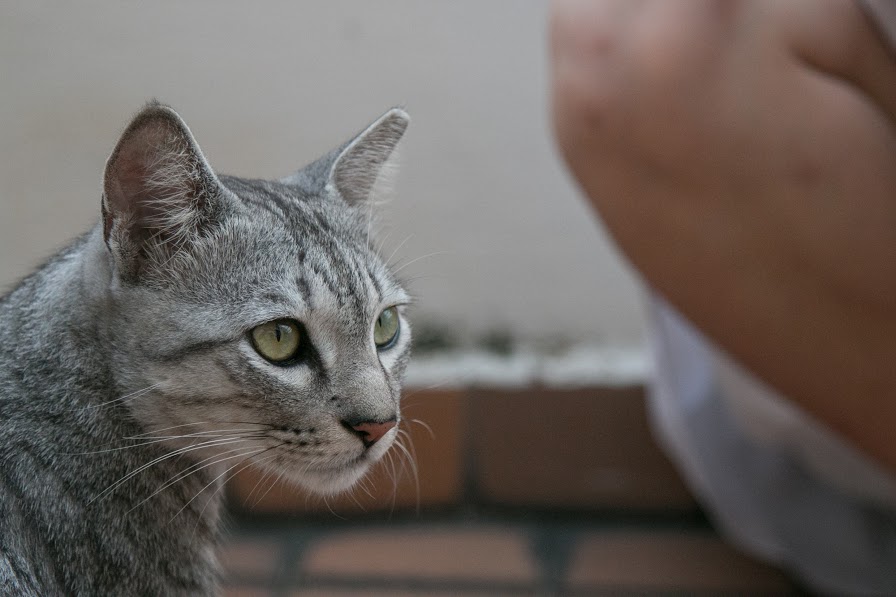“My nephews and nieces think I’m crazy,” says Bella, who has fed stray cats in the same spot in Tiong Bahru since before Singapore was a country. She believes that cats have their own language, just like people. It’s just that most humans don’t understand it.
After more than 60 years of feeding and caring for cats every day, Bella can read every miaow, hiss, twitch of an ear, swish of the tail or flash of the eyes better than any vet or animal psychologist could.
“Some of them – the miaow miaow miaow calls – I understand. When the mother is calling her kittens, I know what she’s saying. The vet would not know, but I know,” she says, while petting an extremely well-fed tortoiseshell curling around her legs
Standing by her feeding perch in a small back street off Kim Tian Road, behind hipster bar Coq & Balls, a medical center and a community Fairprice supermarket, Bella recounts the most extreme behaviour she can remember from her clowder of contented cats.
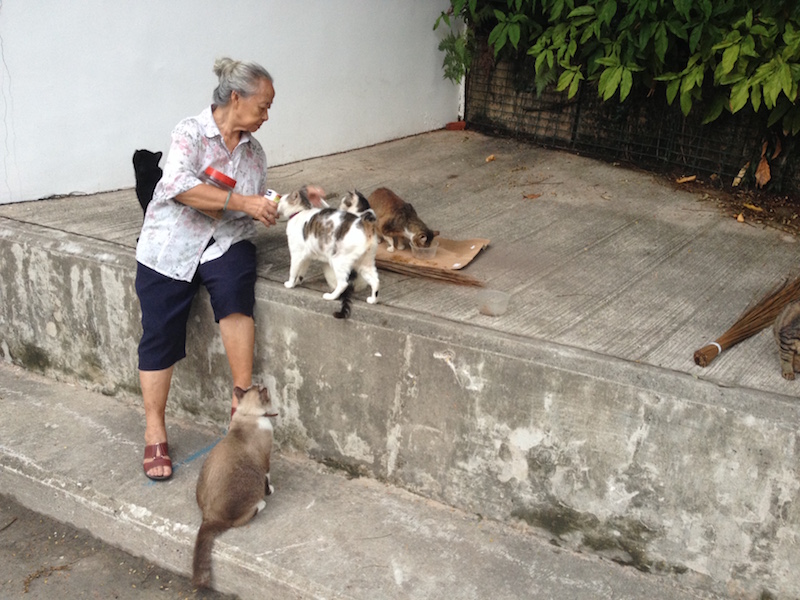
“She reared up like a cobra, and so did her kittens – hissing, eyes burning, tongue red. I’ve never seen anything like that,” she says, remembering a time an attempt was made to capture one of her cats to have it sterilised.
Most of the 20 cats that Bella feeds are sterilised (obvious by one ear that is clipped) as part of a neutering programme that has, together with culling and other methods, reduced Singapore’s stray cat population from 150,000 in 1999 to between 40,000 and 50,000 today, according to the Cat Welfare Society, a not-for-profit group that helps homeless cats that was founded by a group of friends in 1999 following a newspaper report of five kittens being burned alive.
Ten of Bella’s cats wander freely around the area, 10 she keeps in cages. Why? Because these cats are too slow, and are at risk of getting run over, she says, motioning at the cars and trucks that now use the back street. There was very little traffic half a century ago.
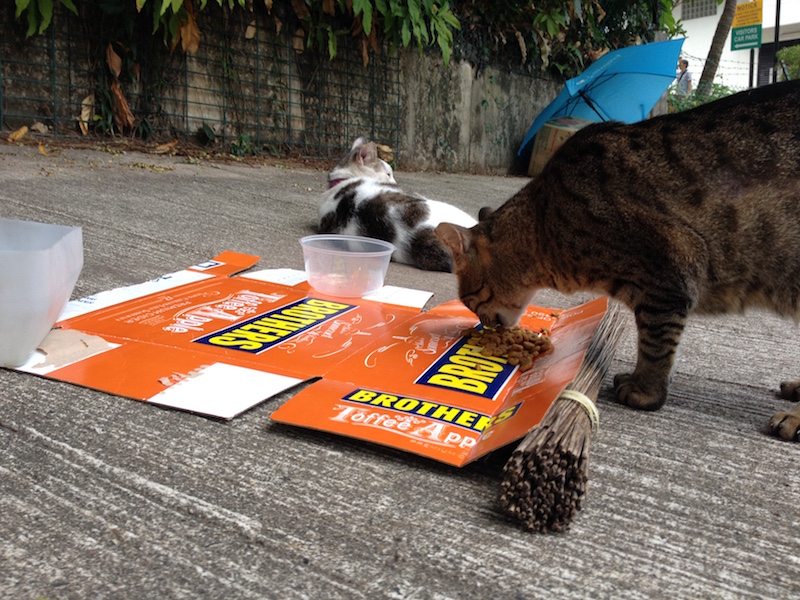
She says cat feeding is a vocation, a duty. And though it might not appear on many resumes, it is a full-time job. “Some people tell me this black cat is so cute,” she says, nodding at a sleek snaggle-toothed tom with lurid green eyes. “But they all look the same to me. They’re mouths to feed.”
If Bella, who as a little girl moved from Indonesia to Singapore in 1954 and began feeding cats soon after, is in anyway crazy, she is in good company.
There are estimated to be around 1,000 cat feeders in Singapore, reckons CWS. The “volunteerism” and “selfless acts” of cat feeders, the Society Against Cruelty to Animals (SPCA) told Coconuts in response to a question about why people feed strays, “are a mark of a kind and caring society, which should certainly be encouraged and supported.”
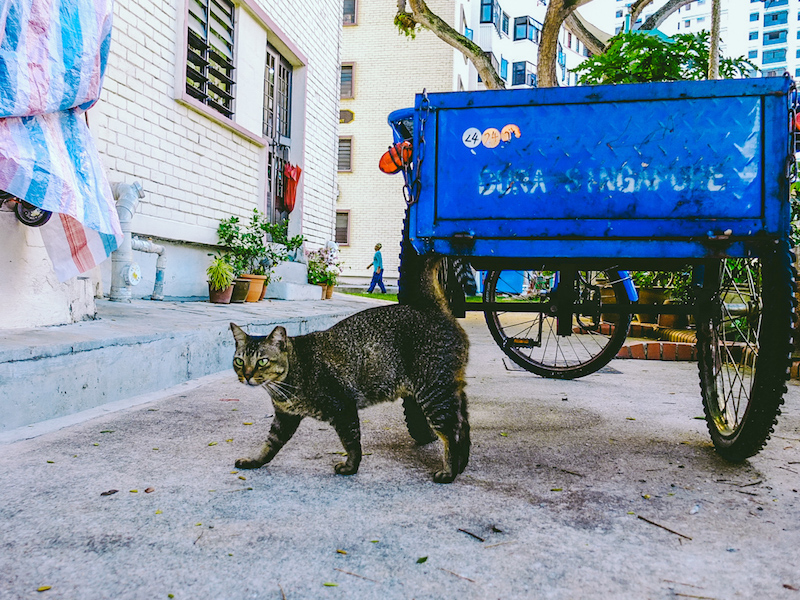
The animal welfare group was also keen to correct Coconuts on the appropriate descriptor for an outdoors-dwelling cat. They are “community cats,” cared for by people who play “an important role in the community,” SPCA says.
But not everyone loves cats.
That’s a reality made evident by a spate of abuse cases in Yishun. In the last three months, 19 cats have been killed or maimed in that district. At Khoo Teck Puat Hospital, a tabby was found floating in a pond just before Christmas. At Nanyang Technological University (NTU), the last case of cat abuse was two years ago, a tabby called Currie, who was found with lacerations to his face and body and a missing ear. A Facebook page tells the story of his recovery and his new name, Genesis. Lily, a ginger cat, went missing last year and has not been found.

Whoever killed or tortured these animals are probably of unsound mind, but there are also those who have genuine grievances with cats and the people who feed them.
The most common reason to dislike stray cats is the most mundane. “People think they’re dirty,” says Michelle Wee, a retired office administrator who started feeding cats 20 years ago, and now devotes six hours a day in three different shifts to feed 30 cats in three different parts of Redhill.
Bella says that not many people complain about the smell or the noise that cats can make at night, another common complaint in neighbourhood areas. Most people who live on the street where she feeds cats are foreigners who don’t complain, she says.
Besides, their living rooms face the front of the street, not the back. The only people who go to the feeding areas are delivery men and cooks taking a cigarette break, who don’t seem to mind the cats hanging out the back with them.
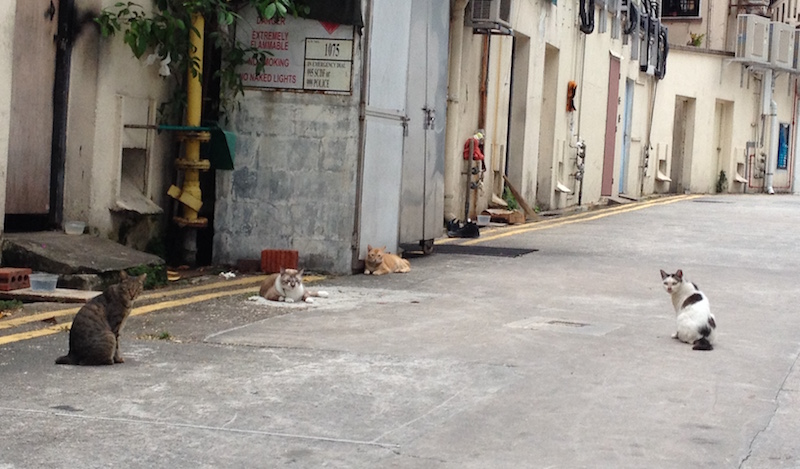
A UK-based psychologist Coconuts asked why people abuse cats said that this sort of behaviour usually begins at a young age, and is seen in those who have been abused themselves, or witnessed domestic violence. It is a case of a cycle repeating itself, and the same types of people who abuse and neglect animals would probably do the same to children. Some suggest abuse cases are inspired by cat snuff videos found on the internet.
“I really think a normal human being wouldn’t do this. I get it, there are people who really don’t like cats. I’ve watched people flinch when they see our hall cats. But they wouldn’t bring harm to them,” says Ng Yi Shu, a member of Love Kuching Project, and a member of NTU Cat Management Network, a campus cat rescue group comprised of mostly undergrads and hall residents, who feed, care for and run a trap-neuter release program for cats on campus.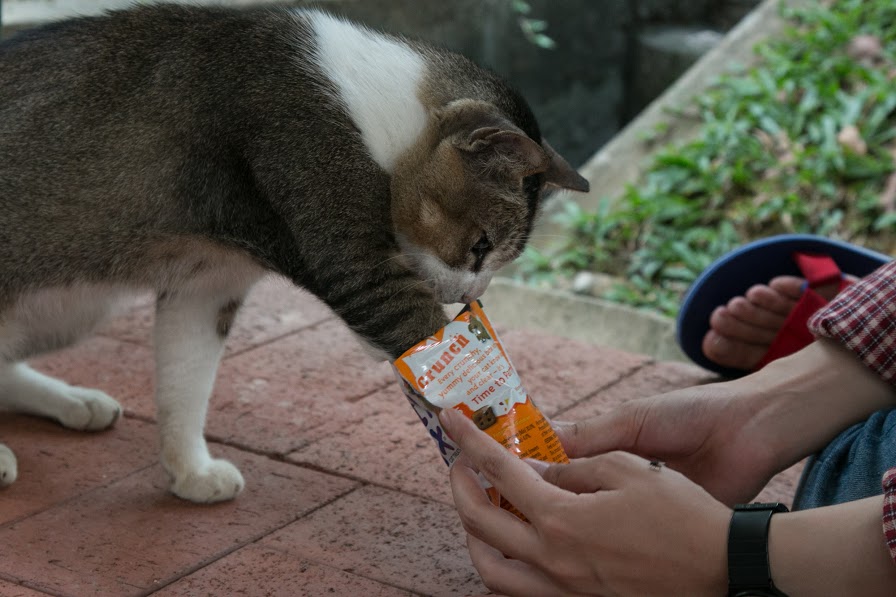
He says that while there are people who do not like cats on campus (the group gives out cat repellent to those who ask for it), he hasn’t come across any open hostility towards them, or threats to kill or harm them.
This could be a result of the outreach efforts of his group, he says, which has managed to get coverage in the mainstream press and is active on social media, using its own Facebook page and the popular Cats of Singapore Facebook page to gain support, spread the word and raise funds.
The Yishun abuse cases are at odds with a social trend towards greater tolerance of stray cats in Singapore, Yi Shu believes, adding that the public response to the cat killings has generally been one of outrage. He describes the spree of cat deaths as murders and complains that the police are doing nothing about it.
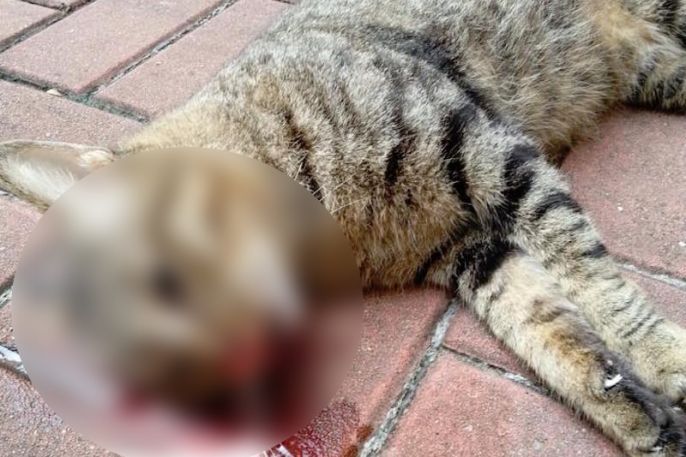
Convictions for cat or any other sort of animal abuse in Singapore are rare, although a 40 year-old man was arrested in connection with the Yishun abuse cases at the end of last month and could be sentenced to 18 months in jail.
“Singapore has no crime, but what if people can get away with killing cats? It should be equated to murder,” he says. The fear is that people with these tendencies could go on to harm humans in cruel ways too, those who aren’t part of their group, such as migrant workers, people on the edge of society, he suggests.